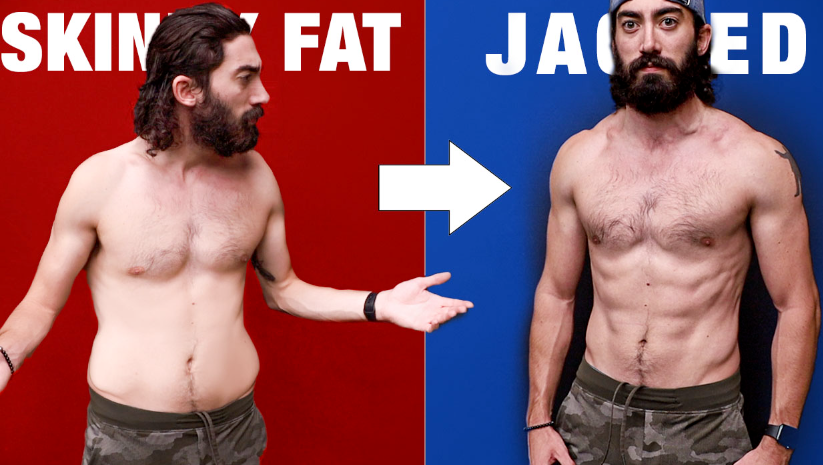BOURSESSENEGAL – In today’s fitness culture, the term skinny fat has gained traction. It describes a body type that appears slim on the outside but has a high percentage of body fat and low muscle mass. Many people struggle with this condition, believing that being thin equates to being healthy. In this comprehensive guide, we will delve into what it means to be skinny fat, how to identify this body type, the potential health risks associated with it, and effective strategies to address it.
What Does Skinny Fat Mean?
Defining Skinny Fat
The term skinny fat refers to individuals who may have a normal or low body weight but still have a high body fat percentage. This condition often goes unnoticed, as many people focus solely on the number on the scale rather than their body composition. Understanding this concept is essential for anyone looking to improve their health and fitness.
Common Characteristics of Skinny Fat
People classified as skinny fat may exhibit the following characteristics:
- Low Muscle Mass: Despite a slim appearance, these individuals often lack muscle tone and strength.
- High Body Fat Percentage: They may have a higher body fat percentage than is healthy, often concentrated around the abdomen.
- Poor Diet: Many individuals in this category consume unhealthy foods, lacking essential nutrients.
- Sedentary Lifestyle: A lack of physical activity contributes to the skinny fat condition.
Identifying Skinny Fat: Signs and Symptoms
How to Recognize If You’re Skinny Fat
Identifying whether you fit into the skinny fat category requires more than just looking in the mirror. Here are some signs to consider:
Body Composition
A healthy body composition includes a balance of muscle and fat. To determine your body fat percentage, consider using tools like body fat calipers, bioelectrical impedance scales, or professional assessments.
Lack of Muscle Tone
If you notice that your arms, legs, or abdomen lack definition or strength, you may be experiencing the effects of being skinny fat. Low muscle tone can lead to a higher risk of injury and decreased physical performance.
Clothing Fit
You may find that your clothes fit loosely in some areas while feeling tight around your waist or belly. This discrepancy often signals a higher concentration of body fat despite an overall slim appearance.
The Health Risks Associated with Being Skinny Fat
Metabolic Issues
Being skinny fat can lead to significant metabolic issues, even if you maintain a normal weight. Individuals in this category may experience insulin resistance, which increases the risk of developing type 2 diabetes. Elevated levels of body fat, particularly visceral fat around the abdomen, can contribute to these issues.
Heart Health Risks
Research suggests that skinny fat individuals face increased risks of cardiovascular diseases. A higher body fat percentage can lead to high cholesterol and elevated blood pressure, even in those who are not overweight.
Mental Health Implications
The perception of being thin can lead to a false sense of security about health. This misconception may result in neglecting physical fitness and healthy eating, which can exacerbate mental health issues, such as anxiety and depression.
Strategies to Combat Skinny Fat
1. Focus on Strength Training
Building muscle is crucial for overcoming the skinny fat condition. Incorporating strength training exercises into your routine can help you increase lean muscle mass. Consider the following tips:
- Compound Exercises: Focus on movements that work multiple muscle groups, such as squats, deadlifts, and bench presses.
- Progressive Overload: Gradually increase the weights you lift to continue challenging your muscles.
- Consistency: Aim for at least two to three strength training sessions per week.
2. Improve Your Diet
Nutrition plays a vital role in addressing skinny fat. Here’s how to optimize your diet:
Balanced Macros
Ensure your meals include a balance of carbohydrates, proteins, and healthy fats. Prioritize whole foods such as:
- Lean proteins (chicken, fish, beans)
- Whole grains (brown rice, quinoa)
- Healthy fats (avocados, nuts)
Reduce Processed Foods
Limit your intake of sugary snacks, fast food, and processed items. These foods contribute to excess body fat without providing essential nutrients.
3. Incorporate Cardiovascular Exercise
While strength training is essential, cardiovascular exercise also plays a role in fat loss. Engage in activities that elevate your heart rate, such as:
- Running or jogging
- Cycling
- Swimming
- High-Intensity Interval Training (HIIT)
Aim for at least 150 minutes of moderate aerobic activity each week, along with strength training.
4. Monitor Your Progress
Tracking your body composition can help you stay motivated and assess your progress. Use tools like:
- Body fat scales
- Measurements (waist, hips, arms)
- Progress photos
Regularly assess your progress to make necessary adjustments to your fitness and nutrition plans.
5. Stay Hydrated
Drinking enough water is often overlooked in fitness routines. Proper hydration supports metabolism, muscle function, and overall health. Aim for at least eight 8-ounce glasses of water a day, adjusting based on your activity level.
Conclusion: Embracing a Healthier Lifestyle
Addressing the skinny fat condition requires a multifaceted approach that includes strength training, dietary changes, cardiovascular exercise, and consistent monitoring. Remember, being healthy goes beyond the number on the scale; it encompasses body composition, strength, and overall well-being.
If you identify with the skinny description, take proactive steps to change your lifestyle. Embrace a balanced diet, engage in regular physical activity, and prioritize strength training. By doing so, you can transform your body composition, improve your health, and feel more confident in your skin.
Don’t let the skinny fat condition hold you back. Start your journey towards a healthier lifestyle today, and enjoy the benefits of feeling strong and energetic!
REFERENCE : https://www.health.com/



